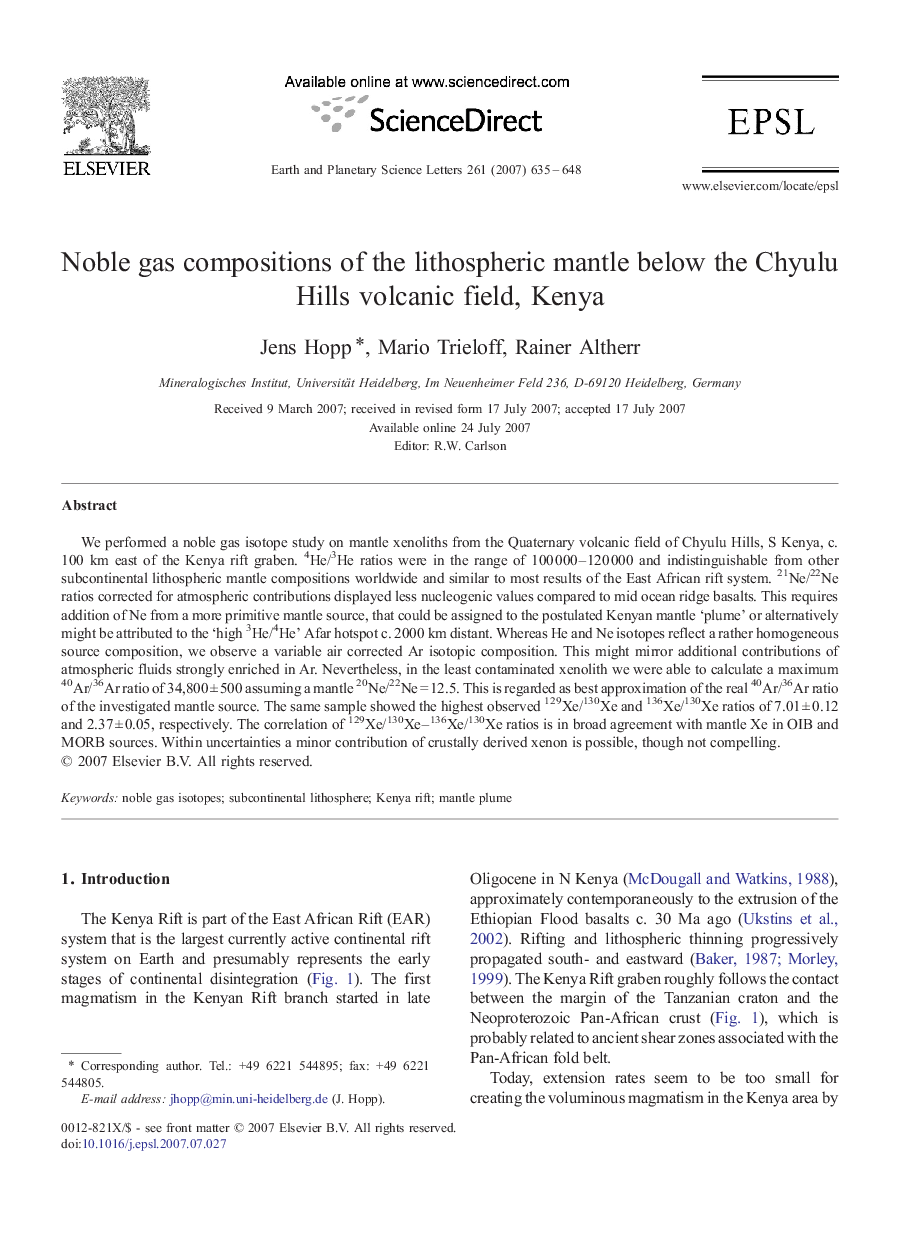| Article ID | Journal | Published Year | Pages | File Type |
|---|---|---|---|---|
| 4680097 | Earth and Planetary Science Letters | 2007 | 14 Pages |
We performed a noble gas isotope study on mantle xenoliths from the Quaternary volcanic field of Chyulu Hills, S Kenya, c. 100 km east of the Kenya rift graben. 4He/3He ratios were in the range of 100 000–120 000 and indistinguishable from other subcontinental lithospheric mantle compositions worldwide and similar to most results of the East African rift system. 21Ne/22Ne ratios corrected for atmospheric contributions displayed less nucleogenic values compared to mid ocean ridge basalts. This requires addition of Ne from a more primitive mantle source, that could be assigned to the postulated Kenyan mantle ‘plume’ or alternatively might be attributed to the ‘high 3He/4He’ Afar hotspot c. 2000 km distant. Whereas He and Ne isotopes reflect a rather homogeneous source composition, we observe a variable air corrected Ar isotopic composition. This might mirror additional contributions of atmospheric fluids strongly enriched in Ar. Nevertheless, in the least contaminated xenolith we were able to calculate a maximum 40Ar/36Ar ratio of 34,800 ± 500 assuming a mantle 20Ne/22Ne = 12.5. This is regarded as best approximation of the real 40Ar/36Ar ratio of the investigated mantle source. The same sample showed the highest observed 129Xe/130Xe and 136Xe/130Xe ratios of 7.01 ± 0.12 and 2.37 ± 0.05, respectively. The correlation of 129Xe/130Xe–136Xe/130Xe ratios is in broad agreement with mantle Xe in OIB and MORB sources. Within uncertainties a minor contribution of crustally derived xenon is possible, though not compelling.
